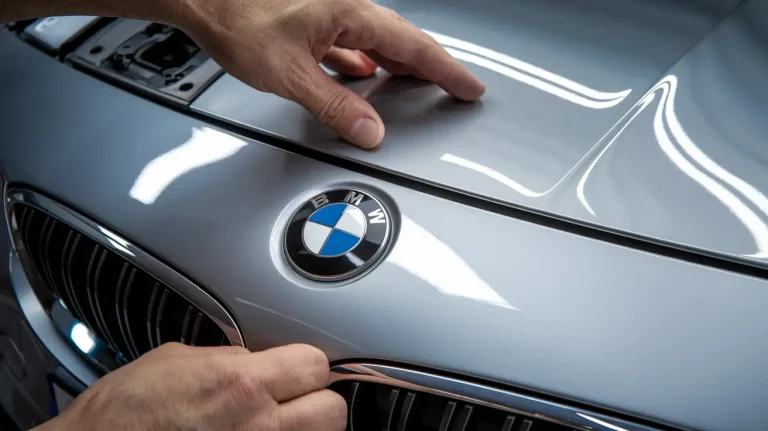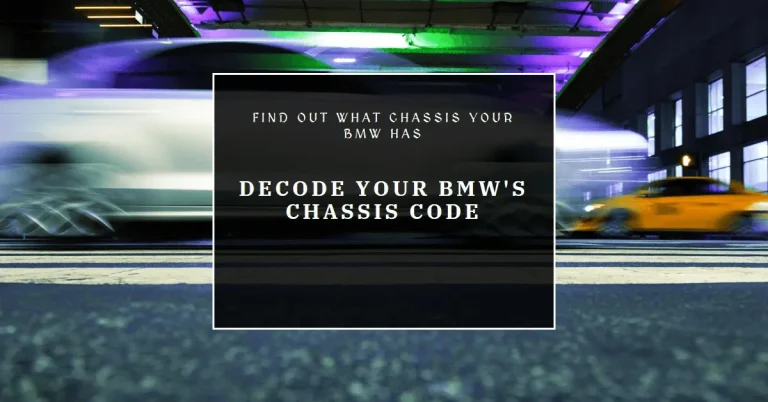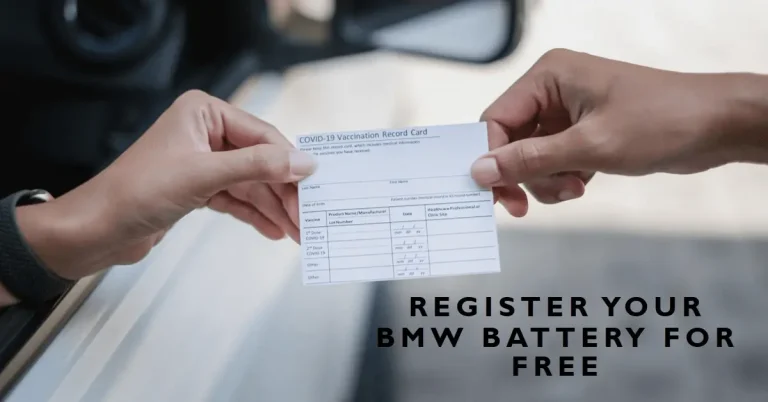How to Charge a BMW Battery? Any Model or Battery Type
Have you ever turned the key in your BMW’s ignition, only to be met with an eerie silence instead of the satisfying roar of its engine? This likely means your battery has run down, and your BMW won’t start without some fresh juice.
Charging your BMW battery is crucial for keeping your vehicle on the road. But how exactly should you charge your BMW’s battery? What type of battery charger do you need? Where can you access the battery in BMW models? This guide will walk through the entire process step-by-step.
Do You Need to Charge Your BMW Battery?
Before deciding to charge, first determine if your BMW battery actually needs a boost.
Here are some common signs your battery is running low and due for charging:
- The engine cranks slowly or not at all when you try to start the car
- Lights seem dimmer than normal while driving
- You notice battery warning lights illuminated on the dash
- Electrical components like power seats or windows operate slower
BMW batteries will also run down over time if the vehicle sits unused for weeks or months. As a rule of thumb, batteries in stored cars will need recharging every 4-6 weeks.
You can also use BMW’s battery monitoring system to check your current charge level. Access the vehicle information menu to view voltage and charge status details.
Choose an Appropriate BMW Battery Charger
The key to safely charging your BMW battery is using an appropriate, compatible battery charger for your vehicle.
You’ll want to match the charger to the type of battery installed in your BMW model. Most BMWs use absorbent glass mat (AGM) batteries, but some models still utilize flooded lead-acid batteries.
Check the specifications printed directly on the battery casing to determine which battery technology your BMW has installed.
For most BMW owners, an automatic 12V smart battery charger in the 5-amp range will suffice for occasional charging. Select a charger with overload and short circuit protection for added safety.
Pay attention to the quality certifications from organizations like ETL when shopping for a compatible, safe BMW battery charger brand.
Locate the Battery in Your BMW Model
Battery placement varies across BMW vehicles. But in most models, you’ll find the battery housed in the luggage compartment or boot.
BMW supports convenient access to the battery terminals by providing hook points for assistance in removal and installation.
Once you locate the battery, identify the positive and negative terminals. BMW conveniently labels these red for positive and black for negative. You may find multiple positive terminals on BMW batteries.
If battery access seems overly complicated, consult a BMW service manual with detailed steps tailored to your model’s year and body style.
Connect Charging Leads Safely
When handling automotive batteries, eye protection and gloves are a must to prevent injury. Batteries contain corrosive acid and can produce explosive gases.
Avoid causing sparks near the battery by touching both terminals simultaneously with a tool.
Start by attaching the positive (red) charger clamp securely onto the corresponding positive battery terminal.
Next, affix the negative (black) charger clamp to the matching negative terminal of BMW battery. You may alternatively connect the negative lead to an unpainted metal grounding point away from the battery if available.
Double check that the clamps have tight contact with minimal resistance to allow proper charging current flow into the battery.
Once properly positioned on the terminals, the risk of overheating or short circuits reduces substantially.
Charge the Battery and Monitor Progress
With safety assured and leads securely installed, plug your battery charger into a GFCI protected wall outlet.
Most smart chargers either sense the proper charge rate automatically or allow you to adjust amperage settings manually. Choose lower settings for smaller batteries or if uncertain.
As charging commences, keep an eye on charge progress via the indicator lights. Depending on depletion level, charging a fully discharged BMW battery often requires 6-12 hours. Newer lithium-ion BMW batteries may charge faster under 3 hours.
While convenient to leave the charger overnight, avoid walking away for extended unattended periods to prevent potential overcharging issues from arising.
Once the charger shows full charge, you can disconnect and test out the battery.
Disconnect Charger and Test BMW Battery
First, unplug the AC power cord from the wall to deactivate charging. Then carefully remove the clamp connector from each BMW battery terminal.
Wiggle each clamp while pulling straight out to break the seal and avoid battery or terminal damage from prying.
After detachment, use a multimeter to validate battery charge level and voltage before reinstalling into your BMW. Compare the readings against factory specifications if available.
If the battery holds stable voltage, you successfully charged your BMW battery!
You may now safely reinstall following the reverse order of removal steps noted in your BMW owner’s manual.
Maintain Health and Extend Battery Life
While occasional charging rescues your BMW’s battery, several maintenance practices promote long-term battery health and performance.
For batteries remaining installed in your BMW, regularly inspect terminals and clamps for excessive corrosion build-up. Use a wire brush to gently clean acidic deposits away as needed.
Allowing batteries to cycle down too low too frequently through leaving electronics on during storage also shortens lifespan over time. Consider disconnecting the battery if parking a BMW for more than 2-4 weeks.
Conversely, driving too little can allow lead sulfation build-up inside BMW batteries. Take your BMW for extended drives at least once per week or consider using a maintenance charger.
Testing BMW battery health at annual inspections tracks performance degradation signaling the need for early replacement. Most BMW batteries survive 4-6 years under normal duty.
When replacing your battery, deliver expired batteries to approved recycling centers to safely reclaim toxic lead and acidic electrolytes.
Key Takeaways on Charging Your BMW Battery
Charging a dead or struggling BMW battery helps restore starting capability and electrical operation in your BMW.
Be sure to select a compatible smart battery charger appropriate for your BMW battery type. Always ground yourself and attach leads properly to avoid sparks and injury risk.
Charge depleted BMW batteries completely overnight as required. But avoid overcharging through monitoring automatic charger status.
Implementing ongoing battery maintenance best practices promotes longer battery life and better BMW performance. Seek immediate help from a BMW service professional if other electrical gremlins arise.
Following the battery charging basics covered in this guide makes for smooth travels in your Ultimate Driving Machine. Your BMW will thank you!
Conclusion
Properly charging your BMW battery is important for keeping your vehicle reliably on the road. This guide walked through the steps of assessing charge needs, choosing an appropriate charger, safely connecting leads, monitoring charge status, disconnecting once complete, and testing charge levels. We also covered best practices for battery maintenance and determining when replacement is required. Equipped with this knowledge, you can now confidently charge and care for the battery in your BMW model. Reach out to a service professional if any concerns arise during charging or battery testing.







